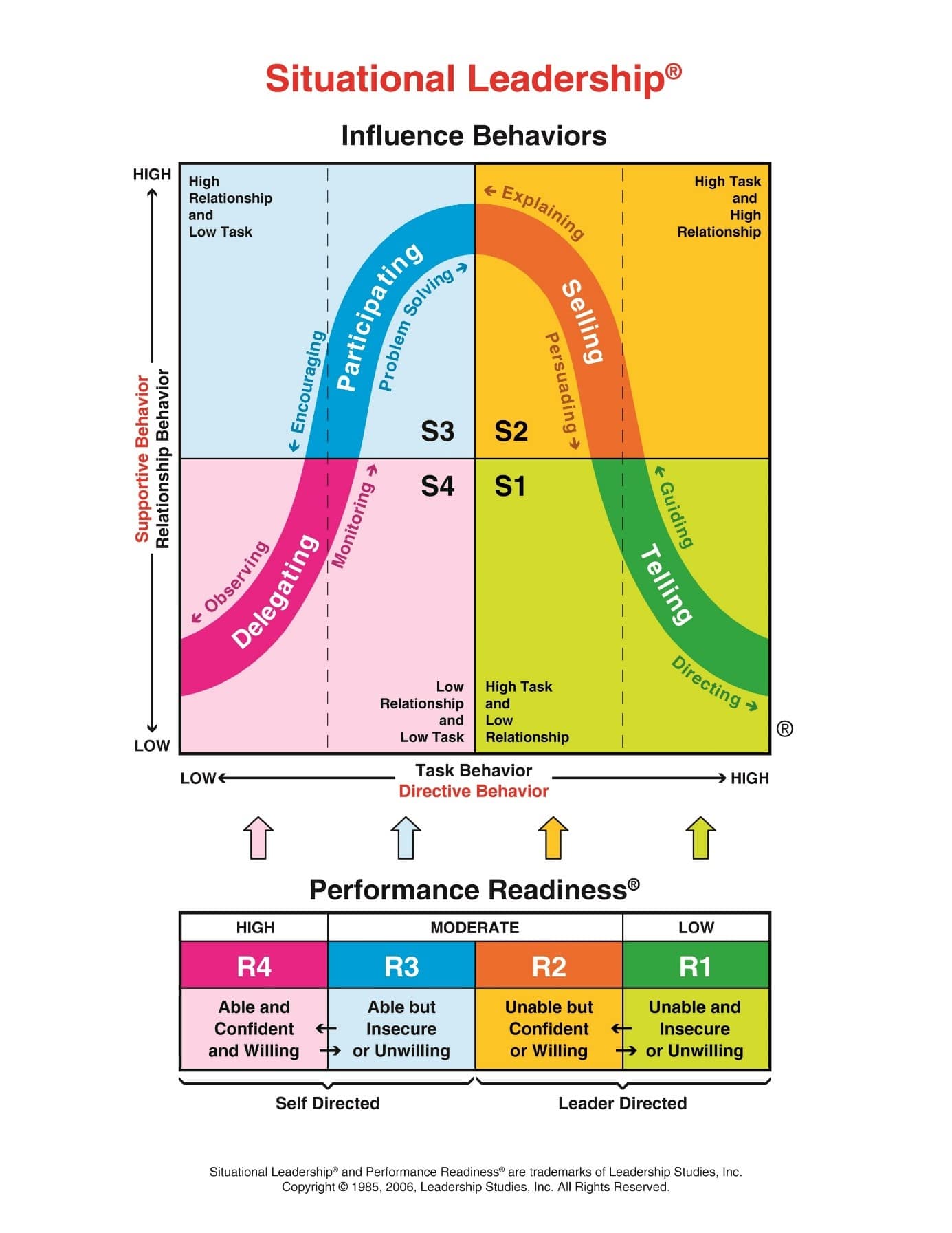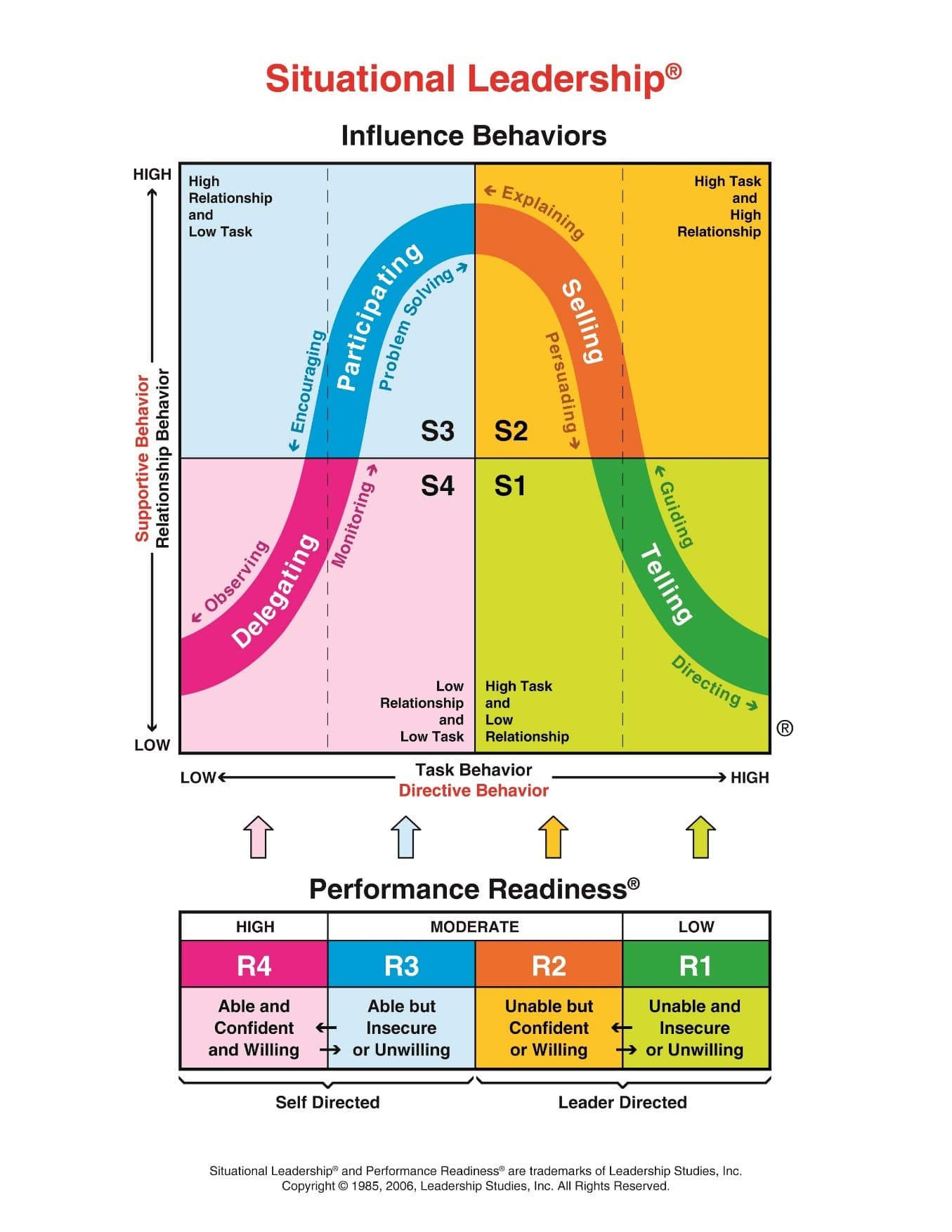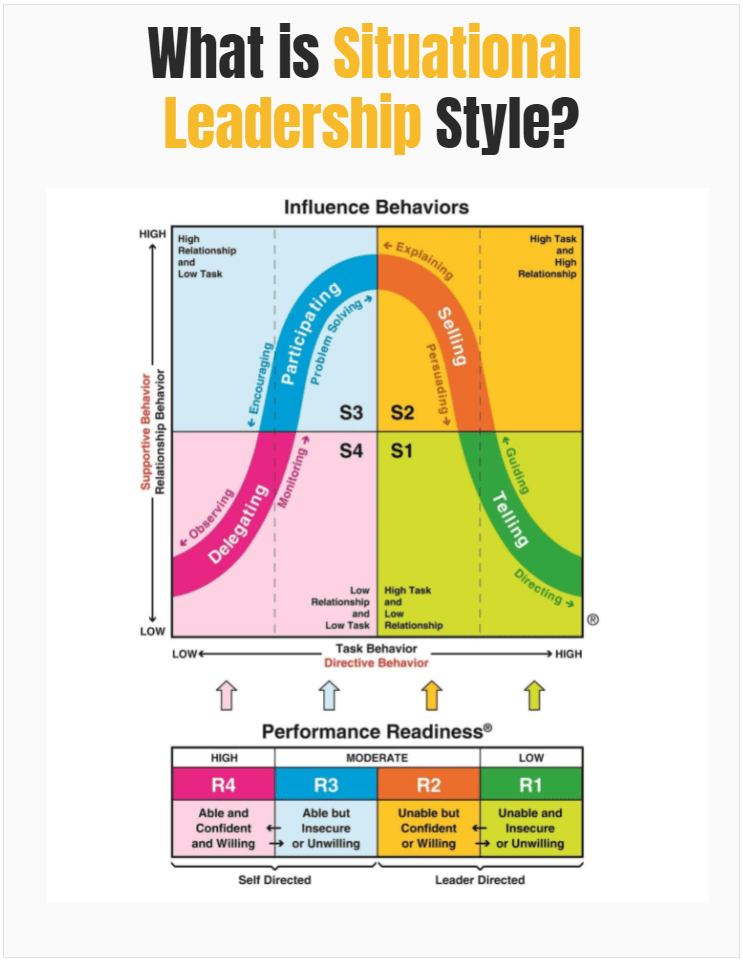What is Situational Leadership Style? Definition and Examples
In this article we are going to get wind of the infamous Situational Leadership Style. We are going to unearth Situational Leadership Examples and Situational Leadership Definition, right here right now together.
Table of Contents
Dear Reader, Welcome to Project Cubicle. If you are a returning Project Cubicle Reader, we’d like to kindly thank you for your trust in our expertise. We hereby would like to Welcome You as the New Official Member of the Project Cubicle Community, if this is your first article here at Project Cubicle. To shortly inform you about what we do, we research for the most recent trends in Business and then turn them into insightful articles to spread the knowledge and lead you to improve your performance and achieve Success in both your Business Life and Personal Growth.
We are determined to bring you every little thing about the Art of Leadership! – In this article, we explore What is Situational Leadership Style.
Before Reading:
It is not the strongest of the species that survive, nor the most intelligent, but The One Most Responsive to Change.
Charles Darwin
Whenever you’re ready, you may scroll down to begin! We hope you benefit from learning about Situational Leadership.
Now, what is Situational Leadership Style?
Let us clarify something. These theories (i.e., Situational Leadership) refer to Team Members or Employees as “Followers”, and this is the expression where you’ll see in almost every source you look at while researching Situational Leadership Style. This is not new, however the perspective I believe is inhumane, and therefore leads to Team Members and Employees identifying themselves as “Followers” and this once more leads to waste of potential, furthermore an ignorance of individualism. Your Employees and Your Team Members are not sheep and referring to them as “followers” will disregard their capabilities of achieving success. These people are not machines. If you want to become The Best Leader, in other words a Transformational Leader, respect their Employees or Team Members as the Individuals they are. Do not disregard their right of making their own choice and having their own voice. Own Your Voice. And let them own their voice. It will only create a more diverse environment, and when you achieve this, You will become a source of Inspiration. They will look up to and learn from you, and at times you will learn from them. It does not mean that you know less than they do, we all have our unique experiences that shape who we are in both the Business Field and in our Daily Lives. It’s beautiful. You will see how your workplace will blossom when you not hear but listen to these words.
Once more, your Team Members or Employees are human, and just because they must or choose to obey your directives, this does not indicate that they are your “followers”. While appointing them to tasks/projects, please keep this mind.
Respect them as the Individuals and respect their Diverse, Unique Voices. Things will not fall apart if you let them own their voice. Please don’t raise your voice when they do, just watch, learn, appreciate, and celebrate because these people are not Team Members or Employees of another Organization or Cooperation but instead, they are the Your Team Members, and Employees. And you are very lucky that they are! – But for the final time, this does not make them rag dolls.
Woofh. Okay, hope that wasn’t too much. We’re watching people fight for their Freedom of Speech day and night, and as a human being, I feel responsible. We all are responsible for failing to make the world a better, a safer place for living.
With our hard work, we will succeed. The next generation will wake up in a better, freer, happier and safer world.
Leadership is about Empathy. It’s about having the ability to Relate and Connect with People For the Purpose of Inspiring and Empowering Their Lives.
Oprah Winfrey
Let’s Now Dive Deep Into the Arms of Situational Leadership Style
Let us clarify something. These theories (i.e., Situational Leadership) refer to Team Members or Employees as “Followers”, and this is the expression where you’ll see in almost every source you look at while researching Situational Leadership Style. This is not new, however the perspective I believe is inhumane, and therefore leads to Team Members and Employees identifying themselves as “Followers” and this once more leads to waste of potential, furthermore an ignorance of individualism. Your Employees and Your Team Members are not sheep and referring to them as “followers” will disregard their capabilities of achieving success. These people are not machines. If you want to become The Best Leader, in other words a Transformational Leader, respect their Employees or Team Members as the Individuals they are. Do not disregard their right of making their own choice and having their own voice. Own Your Voice. And let them own their voice. It will only create a more diverse environment, and when you achieve this, You will become a source of Inspiration. They will look up to and learn from you, and at times you will learn from them. It does not mean that you know less than they do, we all have our unique experiences that shape who we are in both the Business Field and in our Daily Lives. It’s beautiful. You will see how your workplace will blossom when you not hear but listen to these words.
Once more, your Team Members or Employees are human, and just because they must or choose to obey your directives, this does not indicate that they are your “followers”. While appointing them to tasks/projects, please keep this mind.
Respect them as the Individuals and respect their Diverse, Unique Voices. Things will not fall apart if you let them own their voice. Please don’t raise your voice when they do, just watch, learn, appreciate, and celebrate because these people are not Team Members or Employees of another Organization or Cooperation but instead, they are the Your Team Members, and Employees. And you are very lucky that they are! – But for the final time, this does not make them rag dolls.
Woofh. Okay, hope that wasn’t too much. We’re watching people fight for their Freedom of Speech day and night, and as a human being, I feel responsible. We all are responsible for failing to make the world a better, a safer place for living.
With our hard work, we will succeed. The next generation will wake up in a better, freer, happier and safer world.
Let’s now dive deep into the arms of Situational Leadership Style.
We have 2 Main Parameters:
1. Supportive/Relationship Behavior
2. Task/Directive Behavior
We can think of these parameters as X and Y axis. Like this:

Image Credential: situational.com
As you see above in the graph, Situational Leadership is based on Performance Readiness.
What is Performance Readiness?
Performance Readiness is shortly about asking this question:
How much is the Team Member/Employee ready, prepared or experienced for the soon-to-be-appointed Task or Project?
And how do we answer this question?
How Do We Measure Situational Leadership?
We measure 2 main components, which we’ve discussed above. These were Supportive/Relationship Behavior and Task/Directive Behavior. We evaluate how successful the Employee or Team Member is and divide it by the current performance in receiving and accomplishing tasks or projects.
This will provide you information about the Team Member’s or Employee’s current status, in the terms of Leadership, Performance Readiness.
Why is Performance Readiness Important?
Performance Readiness is a way to measure Temperature in the workplace. The Situational Leader decides how to approach Employees or Team Members based on their Performance Readiness. Why? Because Behavior is based on the Demands of a Particular Situation and Maturity Levels of Employees/Team Members. That’s why this Leadership Style is called Situational Leadership.
How?
Examine the graph carefully one more time.

Image Credential: situational.com
These Highs and Lows are classified under 4 Situational Leadership Styles:
- Telling
- Selling
- Participating
- Delegating
Let’s see what these are.
1. Telling
Unable, Insecure & Unwilling Team Members/Employees.
The only way to get the task or project done seems to be giving clear, explicit directives and instructions about how the task is going to be accomplished and until when. This Situational Leadership Style carries high concern for the task and less concern for the people and relationships. This Situational Leadership may be effective when there are strict deadlines in Organizations with established structures.
2. Selling
Unable but Confident or Willing Team Members/Employees.
The Situational Leader is more interactive towards the Team Members and gives personal support, mentorship, task instructions while letting them ask questions. Each task is explained specifically, assuring their understanding and clarity about the tasks. The Situational Leader has high relationship and task concern. Quality of the performance/job/project is put forward.
3. Participating
Able but Insecure or Unwilling Team Members/Employees.
The Situational Leader includes Team Members or Employees in the Decision-Making process. The Leader has high relationship and low task concern. At this stage, the employees seem to be more mature considered to the first level, and for this reason the Situational Leader confides in their Team.
4. Delegating
Able, Confident and Willing Team Members/Employees.
In this Situational Leadership Style, The Leader not only confides in their Team but also trusts them enough to step back and let them accomplish their tasks, usually monitoring them from afar because they are mature enough. The Situational Leader provides little direction or support. The leader is nor considered about tasks or having a stable relationship with their Team Members because they already get what is being asked of them. They add their unique voice to the task and direct themselves toward success.
Alright! Let’s review Situational Leadership Style
We learned that being a Situational Leader is about Leader’s adjustment to the Demands of the Situation and Maturity of the Team Members. The Situational Leader responds to their environment based on this information. The Situational Leader evaluates this by looking at their Performance Readiness, which is measured by their Supportive/Relationship Behavior and Task/Directive Behavior or Concern. In other words, how much they are present in the workplace. Are they doing their appointed tasks? Are they wasting resources? How efficient are they? What is their Performance Level? Are they ready for a More Difficult Task? This model acts as a Thermometer of the Work Environment. According to the degree, the Situational Leader embraces either a Telling, Selling, Participating or Delegating attitude.
That is all about Situational Leadership Style from us here at Project Cubicle.
Do you think you are a Situational Leader?
Do you know a Situational Leader?
What could be the Benefits of Having a Situational Leader in the Workplace?
Let us know in the comments below!
Thank You For Reading!
See you very soon.










